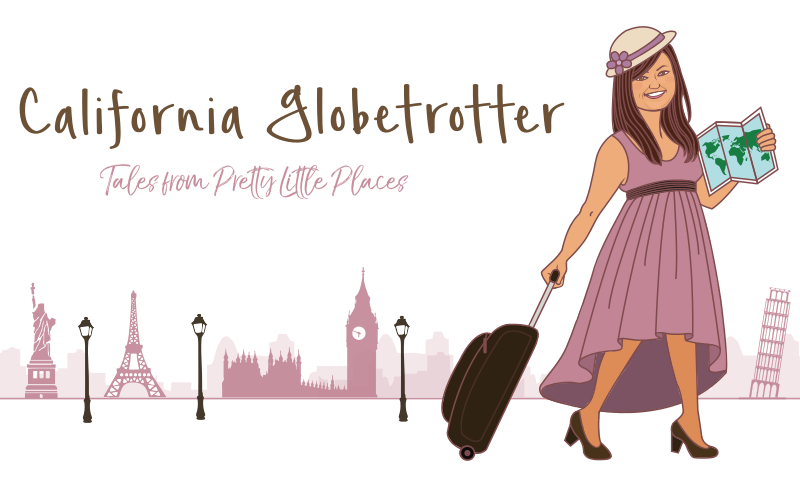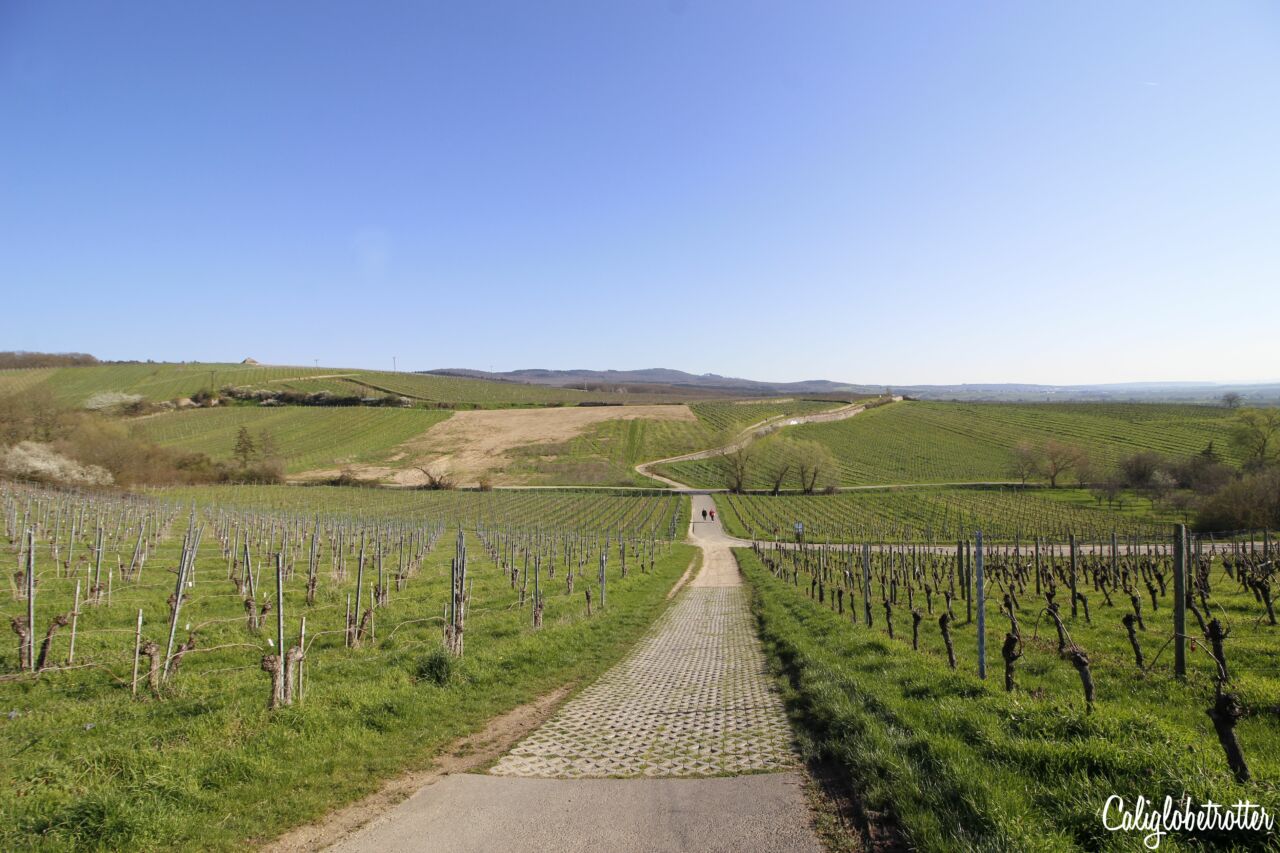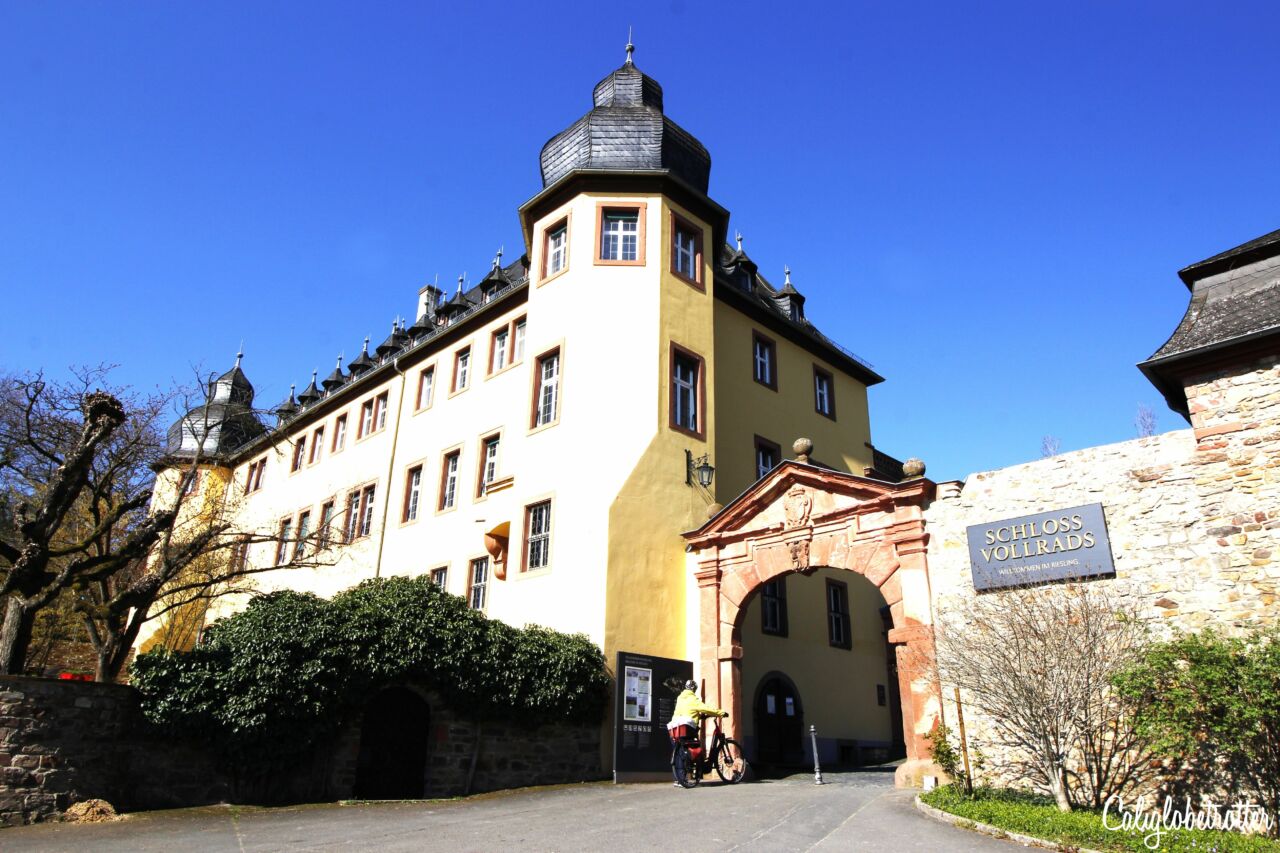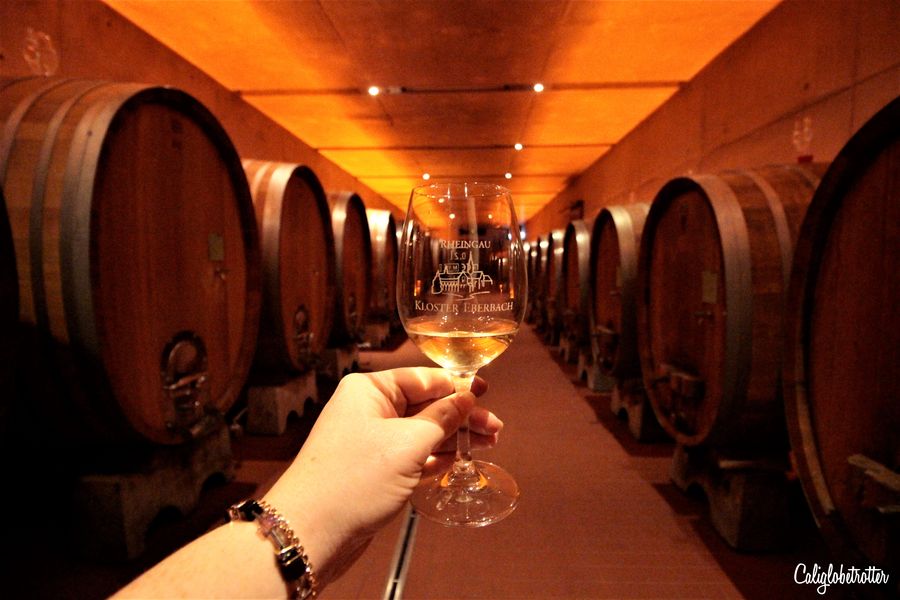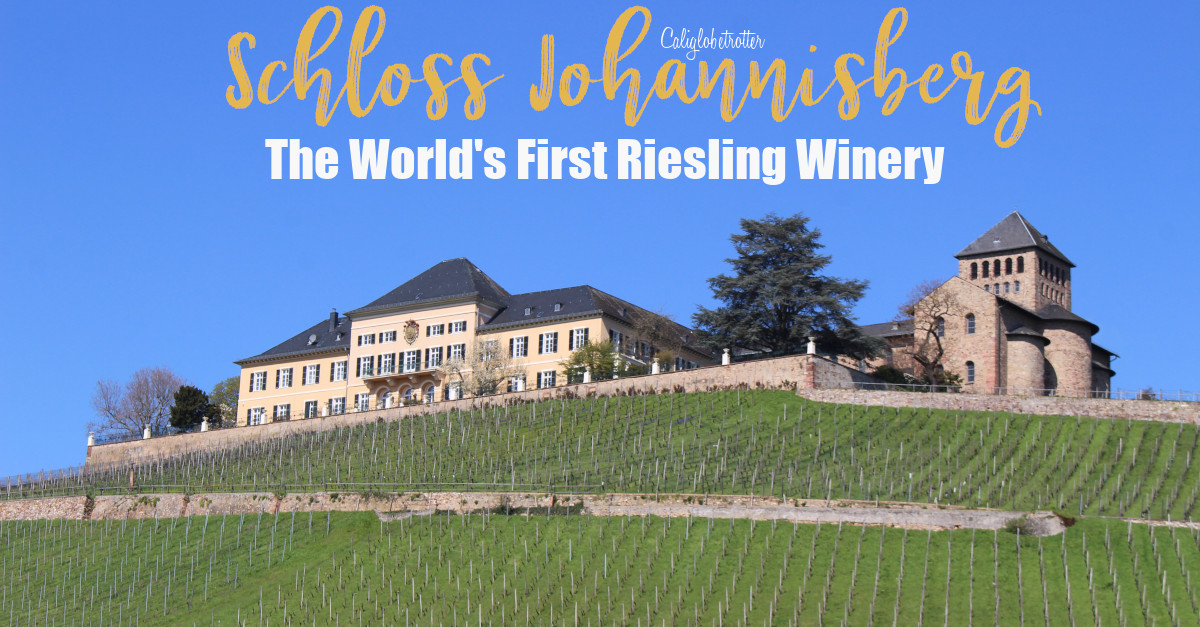
Disclaimer: This post contains affiliate links. If you click on one and make a purchase, I might make a little extra spending money, at no extra cost to you. As always, all opinions are my own and these products/services have been found useful during our travels and come highly recommended to you from yours truly!
Few wineries in the world are as important in the wine world as Schloss Johannisberg has been nor is there another name so synonymous with ‘Riesling’ as Schloss Johannisberg. Perfectly situated atop a hill overlooking the beautiful Rhein River in the Rheingau, this historic winery has been the world’s first Riesling winery since 1720 when it was decided it would exclusively produce this decadent wine. Pull up a chair, grab a glass of wine and come discover Schloss Johannisberg!
Love German Riesling? PIN IT FOR LATER!!

Exploring Germany’s Romantic Rhein Valley
3 Day Itinerary for the Alsace Wine Route
The History of Schloss Johannisberg
Schloss Johannisberg, ‘the pearl of the Rheingau’ has been making wine for over 900 years with a history stretching all the way back to the time of Charlemagne who had a palace on the opposite side of the Rhein River, in Ingelheim. It was from his palace, in 772, that he noticed that the snow melted first on the hill on which today the Johannisberg Castle is perched. However, there is evidence that wine production has been in the Rheingau region since 530.
By 1100, Benedictine monks, who had come from Burgundy, France had completed a monastery here, which at that time was called “Bischofsberg” or Bishop’s Mountain. 30 Years later, the monks built a Romanesque basilica dedicated to John the Baptist and soon afterwards, the the hill became known as “Johnnanisberg” or John’s Mountain.

Fast forward to 1716, the estate was purchased by Fürstab Konstantin von Buttlar, the Prince-Abbot of Fulda and immediately made three important decisions which changed the history of the mountain. First, he knocked down the dilapidated monastery and replaced it with the Baroque castle we see before us today. Secondly, he ripped up all the vines that had already been planted here and replaced them with only the BEST vines and replacing them with only Riesling vines, thus making it the world’s oldest Riesling vineyard. Thirdly, he began to sell his wines by the bottle rather than the barrel, thus reaching more people, especially those who were hiking through the hills of vineyards in the region, hence why there’s a wine shop on the premises.

Until 1775, a courier was required to take a sample of ripe grapes by horse to Fulda, 150km away, to get the approval of the Prince-Abbot that the harvesting season could begin, which resulted in about a week’s worth of time, there and back and must not be harvested after October 16th.
However, Schloss Johannisberg would make wine history in 1775 when by accident, the discovery of Late Harvest Wine, called “Spätlese” was discovered. Legend has it that for reasons unknown, the courier came nearly 3 weeks too late. So the wine master harvested the grapes with noble rot anyway with the thought in mind, “bad grapes is better than no grapes” and with a stroke of luck created a new type of wine and today, there is a statue of this courier in the courtyard, probably the only statue in the world dedicated to a man who was late.

That lead to other wines such as the Selected Harvest Wines (Auslesen), Select Berry Harvest Wines (Beerenauslesen), Select Dried Berry Harvest Wines (Trockenbeerenauslesen) and later Ice Wine (Eisweine) being created, creating a selection of choice selection wines with a high quality.
“Stop on the road at the village of Rudesheim and the Abbaye of Johnsberg to examine their vineyards and wines. The latter is the best made on the Rhein without comparison. … That of the year 1775 is the best.” – Thomas Jefferson, President of the United States of America
Nothing interesting would happen again until the time of the Napoleonic Wars, where the estate exchanged hands multiple times, even with Napoleon himself trying to make a profit from the winery. After the Napoleonic Wars, the estate was gifted to the Austrian statesman, Prince von Metternich, for his role in negotiations at the Vienna of Congress in 1816, as well as given a princely title in return for 10% of each year’s wine production.
In 1942, a air raid bomb accidently landed on Schloss Johannisberg, resulting in severe damage. The castle was not an intended target, as the plane was heading to Mainz/Wiesbaden when they started to experience difficulties and had to release the bombs.
By 1960, the castle had been rebuilt, though unfortunately, not entirely back to its former glory. While the castle was rebuilt, it was only simply rebuilt, thus, there is nothing of interest to see inside of the castle.
In 1971, Schloss Johannisberg was recognized as it’s own individual vineyard and was a founding member of the VDP, the German Growers’ Association.
The family line of the Metternich family died out in 2006, thus passing on the conservatorship to Dr. Oetker in 1976 when it became clear that the family would have no heirs. The castle today is privately owned by the Oetker family and is therefore not open for public tours, except the wine cellar.

A Visit to the Schloss Johannisberg Winery
If you’re looking for wineries to visit near Frankfurt, look no further than Schloss Johannisberg! The name Johannisberg became a synonym for Riesling, establishing the highest quality of Rieslings, not just in the Rheingau region, but in all of Germany. Today, Schloss Johannisberg is one of the Top 5 best wineries in the world, for their passion for producing outstanding Riesling wines, making them a monument to wine culture and a vital part of German wine-growing history.
With the vineyard located directly on the 50th parallel north, the 50 hectares that encircles the castle has been and continues to be the best location in the world to produce Riesling due to the difference in temperature throughout the day and night which promote rich aromas and lasting flavors to the grapes.

The 50th parallel north is at the limit in Europe where viticulture can still have a chance and here, Schloss Johannisberg receives an average of 1700 hours per year of beautiful sunshine. However, in the last decade, Schloss Johannisberg has not escaped the extreme heat that has been plaguing the region throughout the summer months. Typically, the weather was 20 degrees Celsius at most during the summer, and in recent years, temperatures have soared occasionally to the 40s.
Charlemagne had a wine growing intuition when it came to locating regions with the right conditions perfect for growing wine. However, one of the most important characteristics about wine growing in the Rheingau is that unlike most of the Rhein River which runs south to north from Lake Constance in Switzerland to the North Sea in the Netherlands, there is a portion of the Rhein River which suddenly turns and runs east to west for 39km. This is the effect of hard quartzite which the river couldn’t pass through, therefore, all the vineyards in this region face southwards, providing just the right amount of sunshine, perfect for producing the best Rieslings in the world and one the the best wineries to visit in the Rheingau!

“Johannisberg is by all odds the greatest name of the Rheingau. And principally, of course, and first of all, Schloss Johannisberg itself.” – Frank Schoonmaker, 1956
Hike Around Schloss Johannisberg
Visiting Schloss Johannisberg is one of the easiest day trips from Frankfurt and is highly recommended! There are many wonderful ways to spend an afternoon here. Begin by taking a stroll around any of the paths through the vineyards that encircle the winery. The castle sits atop of quartzite hill in front of the Taunus mountains, with an inclination of 45 degrees, facing southward down to the Rhein River, so here you will have beautiful panoramic views over the Rhein and Rheingau region. On a clear day, you can even see the neighboring town of Rüdesheim, another important wine growing town in the region.

Wine Tasting & Tours at Schloss Johannisberg
With a guided tour of Schloss Johannisberg, you can enter the wine cellar where you will first be greeted with a glass of sparkling Fürst von Metternich Riesling as you are guided through the impressive wine cellar. You’ll be shown the oak barrels, made from local wood from our very own forest in the Taunus mountains, before plunging deeper into the wine cellars. The old wine cellar is only used for a short amount of time to mature until it is time for bottling. It often ranks as one of the most beautiful wine cellars in the world!

Wine produced here at Schloss Johannisberg is stored in oak barrels from our very own forest in the Taunus Mountains, which grows from the same earth as the grapes, in the standard size of 1200 liter barrels which is common in the Rheingau region.
You will be shown the historic “Bibliotheca Subterranea” or Subterranean Library, dating back to the 11th century with a consistent temperature of 10 degrees Celsius. Unfortunately, you won’t be allowed through the gates, but here you can see wine bottles that have been aging as far back as 1748! Currently, there are about 25,000 bottles of wine stored here!


Wine tastings are 29€ per person, or private bookings can be booked in advance for groups of 10 or more people. If you require an English speaking tour, please inquire per E-mail in advance, as English guides are not always available. Wine tours are available, Fridays, Saturdays, Sundays and public holidays.

Other ways to taste Schloss Johannisberg Rieslings is by either popping into the Wine Shop (Vinothek) and asking for a free tasting, or just behind the shop is the Schlossschänke Restaurant where you can purchase a glass of wine and either enjoy the view from inside the restaurant overlooking the vineyard, or in the warmer months, enjoying your glass at the tables provided outside. Here, you will be sorely disappointed to learn that beer is not served here. So, don’t WINE about it!

“The wines of Johannisberg are characterized by a delightfully pleasant bouquet, they are spicy, with fire and power and have a golden colour.”

Events at Schloss Johannisberg
Throughout the year, but especially from April to October, there are events taking place at the castle on a regular basis making Schloss Johannisberg one of the best summer destinations to visit in Germany because there’s always something going on!
From April to October, weather permitting, you can enjoy a glass of wine from the Goetheblick, a location near the Catholic Parish Church connected to the castle with views over the vineyards and the Rheintal named after the famed Johann Wolfang von Goethe who once stayed here and was a friend of Prince von Metternich. This is open to the public Thursdays to Sundays.


I highly recommend also booking and reserving in advance for one of our prepared Picnic Baskets, lovingly filled with delicious snacks, cutlery to be paired with a bottle of wine of your choice for 39,50€ = a 50€ pfand (deposit) for the basket which will be refunded upon return of the basket. Take your picnic basket anywhere throughout our vineyards, sit down and relax and enjoy the moment and the view with someone special!
“The Johannisberg dominates everything.” – Johann Wolfgang von Goethe
In June and September, there is a special Vineyard Picnic down which includes an aperitif, traditional meals as well as wine from Schloss Johannisberg under twinkling lights. This requires booking in advance.
Throughout the summer season, you’ll find any number of concerts being held at Schloss Johannisberg, dating back to 1988. Tatiana von Metternich-Winneburg was a co-founder of the Rheingau Musik Festival and she turned the East Wing of the castle into a public concert venue, staging anywhere between 10-19 concerts, recitals and music performances.
In October, there is a small Autumn Market at the castle filled with local products and goodies from the region, as well as a chance to try the wines.
If you happen to be visiting Germany in December, then pop on by for Schloss Johannisberg’s Christmas Market for the first weekend in December.
It is also possible to book your wedding at the castle in one of two ballrooms located at the castle.

Schloss Johannisberg’s Wines
The name Johannisberg Riesling proceeds itself and the name carries the weight of excellence. The wines from Schloss Johannisberg range from dry to sweet. Most German Rieslings which are exported to other countries tend to be very sweet, but here you’ll be quite surprised at how dry the Rieslings can be, yet they are perfectly balanced out by the sweetness.
On the labels of the wine bottles, you’ll notice that it states clearly Schloss Johannisberg. That is because it is one of the few vineyards in Germany which does not need to add the name of the village where the wine is made. Schloss Johannisberg is a description unto itself.
What makes wines from Schloss Johannisberg so special and costly is the fact that only a certain yield per year is harvested by hand. Harvesting by hand is a very costly and much more delicate than harvesting by machine.
Upon visiting Schloss Johannisberg, you’ll learn about the Quality Wine Pyramid and learn about the differences in the colors of the wine bottles, which are used to distinguish the wines. We are the only winery in Germany allowed to use a color scheme to differentiate between our wines.

On the left side of the pyramid, we have the Dry Wines (Trocken), with the Gelblack, Brozelack, Silberlack GG (Großes Gewächs), Goldlack. The closer to the tip of the pyramid, the higher the quality of the wine which will also increase in price.
On the right side of the pyramid, we have the Off-Dry (Feinherb) wines increasing in sweetness with the Rotlack Cabinet, Grünlack Late Harvest (Spätlese), the Rosalack, Purpurlack, Violettlack which is the Ice Wine (Eiswein) before peaking with the Blaulack.
“Mon Dieu! If I had so much belief in me that I could move mountains – Johannisberg would be just the mountain that I would allow to follow me everywhere.” – Heinrich Heine
Perhaps you’ll also notice on the bottle near the cap an eagle with VDP on it. VDP stands for Verband Deutscher Prädikatsweingüter, or Wine Growers’ Association, which is an exclusive membership, founded here in the Rheingau, of which there are only 200 in Germany. This signifies that a wine is considered the highest quality German wines. It is a symbol which states that here, only the finest wines are grown, notable for their individual character and the winery’s ability to express the essence of their vineyard in a bottle.

The Connection to Furst von Metternich Sparkling Wine
With a visit to Schloss Johannisberg, you’ll also notice, especially during your wine tour, that you’ll be handed a glass of Fürst von Metternich Sparkling Wine (Sekt) and wonder why.
Fürst von Metternich was a big fan of Champagne and wanted to make his own and in1864, he partnered with Jacob Söhnlein who knew how to make Champagne in the French style. Together, with the Riesling wine produced at Schloss Johannisberg, they created the Riesling Sekt which won the Gold medal at the Paris World Exhibition in 1867.
Later, after a merger with Henkell & Co in 1986, Fürst von Metternich Sparkling Wine because the most important sparkling wine brand ever. It is a sparkling wine style made from the Riesling of Schloss Johannisberg, brut style.
Today, Fürst von Metternich Sparkling Wine can be bought worldwide, however, with a visit to Schloss Johannisberg, you can purchase a bottle of Fürst von Metternich Sparkling Wine, Riesling Sekt Brut, that is exclusively sold at the Wine Shop on site.
We have 3 Riesling Sekts ranging from Trocken (Dry), Extra Trocken (Extra Dry) and Brut (French for Dry) which is the driest of the Riesling Sekts. Then there is a Chardonny Sekt & Brut, as well as a Rose Sekt made from Pinot Noir grapes.

Combine a Trip to Schloss Johannisberg with Schloss Vollrads and Kloster Eberbach
If you want to hit up some of the most historic places to visit in the Rheingau region, then consider making a full day of it. While you can easily drive from one location to the next, perhaps consider leaving the car in the parking lot and breaking out your hiking boots and take a hike through lush vineyards. Hiking in the Rheingau is a fully integrated part of the experience of visiting the Rheingau region and nothing is more exciting than hiking through the vineyards!
Consider starting at Schloss Johannisberg and walking a very casual route to Schloss Vollrads, which should take roughly 30 minutes along the Rheinsteig Hiking Route. Relax a bit at Schloss Vollrads by popping into their Wine Shop or ordering a glass of wine at their outdoor wine stand and fill your bellies with grub to give you the energy you’ll need to hike to Kloster Eberbach. All combined, it should take roughly 2 hours hiking in one direction, 4 hours with a return trip. A small price to pay to enjoy some of the region’s wines from the most historic wineries in Rheingau.
If hiking is not for you, then there’s no shame in driving from one location to the next, but please make sure you have a designated driver.
My Personal Preference
Personally, I am not a dry white wine drinker, however, I quite enjoy the Gelblack Feinherb (Off-Dry) the most, while I quite adore the Rotlack for a nice summer evening on the terrace with friends which can also be paired nicely with spicy foods and BBQ. The Grünlack is also a favorite of mine, but not to be drunk in large quantities because it is quite sweet, and therefore, it’s better to be enjoyed with desserts, strong cheeses or even with spicy Asian dishes.
After having the pleasure of doing a 6 month internship here as I decided to do a hard-left career change into the wine industry, I think this is a great place for anyone to visit who loves wine and history an can appreciate a beautiful scenery. So just because it perhaps may not be in your Germany guidebook, doesn’t mean it isn’t worth a visit. Schloss Johannisberg really is a diamond among the stars.

Liked this Post? PIN IT FOR LATER!!

Other Related Posts:
The Franconian Wine Capital of Bavaria: Würzburg
Discover the Kentucky Bourbon Trail
